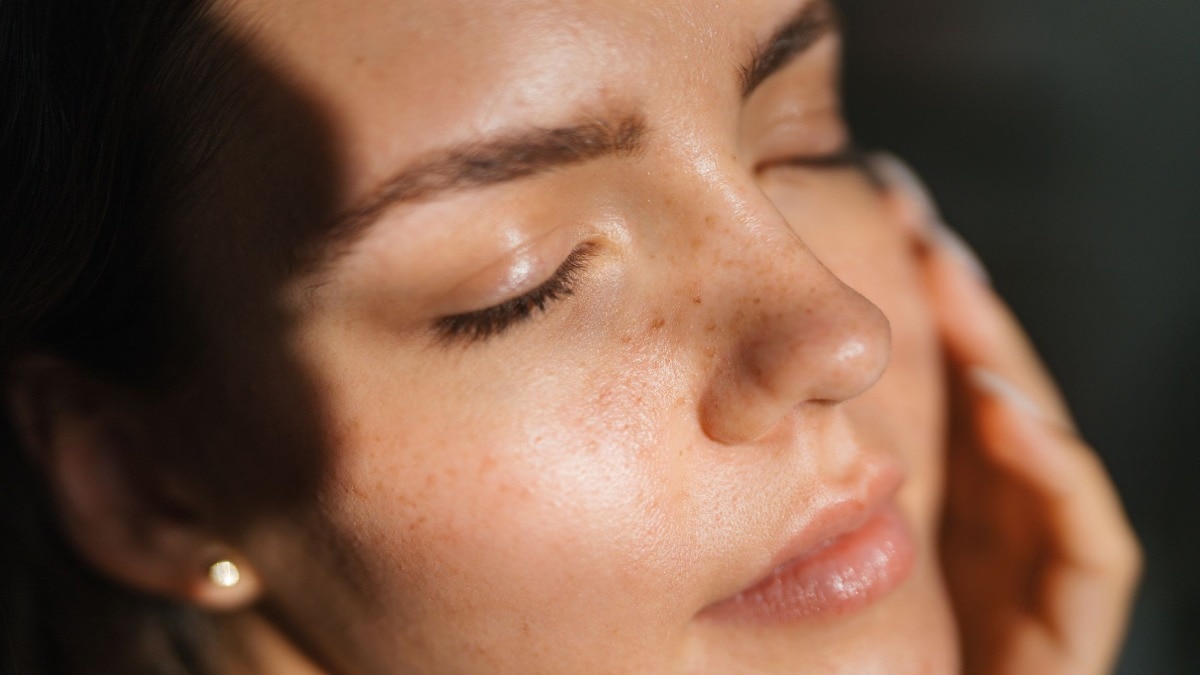
#SkinSchool: Everything you need to know about tretinoin
Why the anti-ageing, anti-acne powerhouse remains viral.


When retinol (a type of retinoid) first burst onto the beauty scene it became the Marmite of skincare. While some hailed its effective results and were happy to withstand the 'retinol uglies', others were left cursing the dry and irritated complexion it left behind. But, if you were in the former camp, you'll love retinol's powerful big sister—tretinoin.
More concentrated than retinol with other super-charged promises to boot (more on this later), tretinoin is having its moment. Although the ingredient is nothing new (it was first used in 1962 and approved for treatment against acne in 1971), it has experiencing something of a renaissance with videos tagged #tretinoin boasting one billion views on TikTok, and Google searches doubling in a year.
“People are waking up to the fact that a lot of the things that are marketed to them are perhaps never going to exert the changes that they say,” Dr. Emma Craythorne, consultant dermatologist and Klira founder, tells us. “People now want what will actually work, and this has led to tretinoin's surge in popularity,” she feels.
Tempted? We asked the experts how to use it.

What is tretinoin?
“Tretinoin is the active ingredient in retinoid creams,” explains Dr. Charlotte Woodward, medical aesthetics doctor at River Aesthetics. “It's not a natural derivative of vitamin A (like retinol) but is created synthetically by ingredient developers in labs where skincare products are created.” The umbrella of vitamin A for skin comprises of a variety of formulas that all differ from one another in their chemical and molecular structure, as well as the receptors that they bind with within the cell. As a result they all do different things and provoke different reactions in the skin. “Tretinoin is the generic name for several branded synthetic forms of vitamin A, such as Atralin and Retin-A,” Dr. Woodward explains.
What are the benefits of using tretinoin?
Although tretinoin was primarily created to treat acne, it wasn't long before experts cottoned on to its other advantageous side effects for the skin. While the term 'anti-ageing' is now loosely thrown around the beauty stratosphere, scientific evidence shows that tretinoin can actually turn back the clock when it comes to our complexion. “These products actually fix the cause of ageing by preventing and reversing skin damage,” Dr. Woodward begins. “That means the skin doesn’t just look younger—it actually is younger, at a cellular level. By speeding up cell turnover, it encourages dead and dying skin cells to slough away from the surface more quickly, causing new growth underneath to be revealed at a faster rate.”
Stronger than its retinol counterpart, you can expect the results to reflect its potency. “Tretinoin is a form of retinoic acid, therefore, does not need to be broken down by the enzymes in your skin before it can be used. This means that they are approximately 100 times stronger than the average retinol cream you buy over the counter. This strength offers amazing and speedy results – diminished blemishes, evened skin tone, minimised hyperpigmentation, smoothed fine lines, reduction in wrinkles and boosted skin elasticity for a more youthful glow.”
When it comes to the wrinkle-reduction, it's by thickening the epidermis that this change happens, explains Dr. Craythorne. “It takes at least nine months before you see that change but it is a definite recorded result that happens. It also helps with the natural production of collagen and hyaluronic acid within the skin, so it becomes plumper.” Effectively, it actually makes the skin stronger, she adds. “There is a thought that it makes the skin weaker but actually the reverse is true.”

Who is tretinoin best suited to?
Retinol junkies, rejoice – if you've seen a noticeable improvement using a vitamin A-based product, you'll love tretinoin for the next stage in your skincare journey. But, for those with a more specific need such as treating acne breakouts and scarring, it can be an effective way to reset the skin. “When dead and dying cells are shed from the surface of the skin more quickly, clogged pores are cleared away as well,” explains Dr. Victoria Manning, another medical aesthetics doctor at River Aesthetics. “Tretinoin keeps these dead skin cells from sticking together and clogging pores, which means that existing acne is cleared away more quickly and new breakouts are prevented because of the products ability to consistently exfoliate the skin.”
Not for the retinol novices among us, there's a reason why tretinoin is only available through a prescription in the UK. However, thanks to custom-skincare services such as Dr. Craythorne's Klira; Dermatica; and Skin + Me – online prescriptive skincare services with on-hand dermatologists, it's a lot more accessible. An online consultation and pictures of your skin are examined by experts, before a personalised plan of action and a bespoke dosage of tretinoin – if suited – is sent to your door. “The due diligence beforehand is really key because of its strength,” Dr. Manning warns. “It can cause itching, scaling, burning, peeling, and redness when you first begin using it and it’s worth noting you may also see a temporary increase in acne breakouts if you are using it to treat this skin problem. However these symptoms should resolve in a few weeks and most users then start to see an improvement. Retinol is less effective and tends to perform more slowly, however acne products that include retinol as their active ingredients may be an option for those who find their skin does not react favourably to tretinoin.”
Dr. Craythorne concurs on the potential side effects of tretinoin and advises strongly against use for the wrong reasons, saying, “You must have the correct indication for using it in the first place.” She adds that you also have to be very diligent with your supporting routines. “So you must be using the right moisturiser, the right cleanser and the right SPF. You really can’t experiment with lots of other things that have very little evidence behind them; you need to stick with the stuff that works or you will run into more of those side effects.”
How do I use tretinoin?
Similarly to any active skincare ingredient, Dr. Manning emphasises the importance of going slow to allow your skin to adapt. She suggests starting with a small pea-sized amount every three days applied to clean skin followed by a moisturiser once the skin is totally dry (damp skin can sometimes interfere and cause irritation). “Then you can start to build up the frequency if you don't have any problems,” she says. “You can apply under the eye, but avoid the eyelid area. It’s also recommended to use as part of your evening routine as sunlight deactivates retinoic acid. Once 20 minutes has passed you can smooth on your usual serums, making sure you avoid any acne products—anything that includes benzoyl peroxide which deactivates the retinoids or salicylic acid which exacerbates the skin shedding, so will increase redness and soreness.”
If you've ever experienced the negative knock-ons of retinol you'll know that hydrating and soothing ingredients used in the rest of your skincare regime is key to support the skin's barrier function. Not to mention enable you to leave the house with your face intact!
Story also written by Jessica Harris
This piece originally appeared in Harper's Bazaar UK










